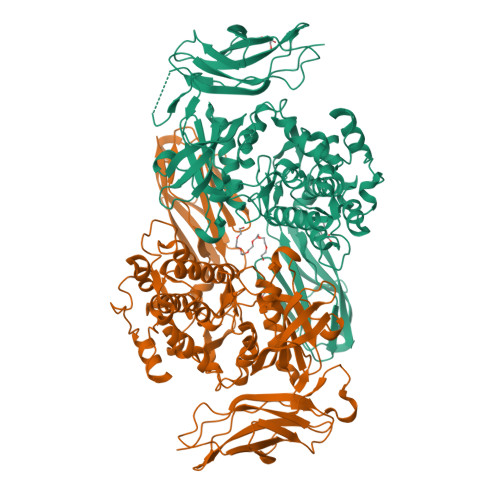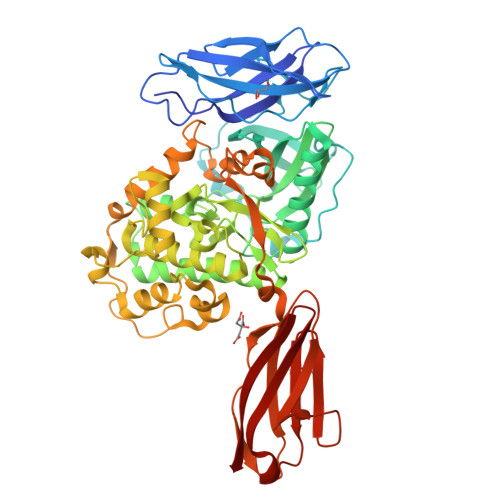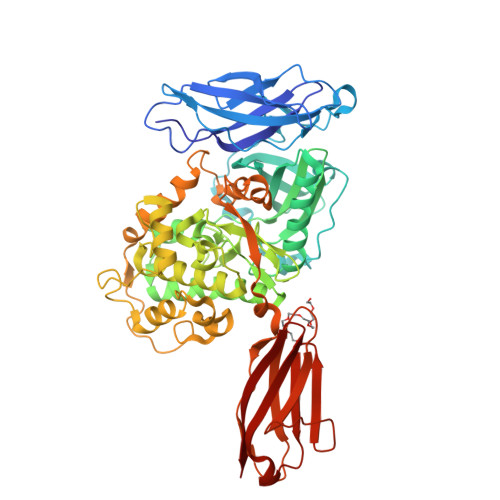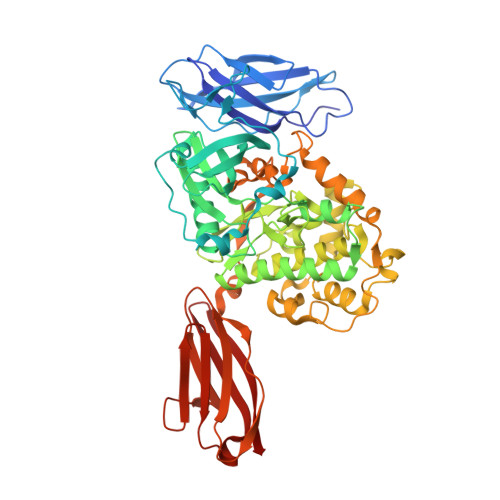Identification of an N-terminal inhibitory extension as the primary mechanosensory regulator of twitchin kinase.
von Castelmur, E., Strumpfer, J., Franke, B., Bogomolovas, J., Barbieri, S., Qadota, H., Konarev, P.V., Svergun, D.I., Labeit, S., Benian, G.M., Schulten, K., Mayans, O.(2012) Proc Natl Acad Sci U S A 109: 13608-13613
- PubMed: 22869697
- DOI: https://doi.org/10.1073/pnas.1200697109
- Primary Citation of Related Structures:
3UTO - PubMed Abstract:
Titin-like kinases are an important class of cytoskeletal kinases that intervene in the response of muscle to mechanical stimulation, being central to myofibril homeostasis and development. These kinases exist in autoinhibited states and, allegedly, become activated during muscle activity by the elastic unfolding of a C-terminal regulatory segment (CRD). However, this mechano-activation model remains controversial. Here we explore the structural, catalytic, and tensile properties of the multidomain kinase region of Caenorhabditis elegans twitchin (Fn(31)-Nlinker-kinase-CRD-Ig(26)) using X-ray crystallography, small angle X-ray scattering, molecular dynamics simulations, and catalytic assays. This work uncovers the existence of an inhibitory segment that flanks the kinase N-terminally (N-linker) and that acts synergistically with the canonical CRD tail to silence catalysis. The N-linker region has high mechanical lability and acts as the primary stretch-sensor in twitchin kinase, while the CRD is poorly responsive to pulling forces. This poor response suggests that the CRD is not a generic mechanosensor in this kinase family. Instead, the CRD is shown here to be permissive to catalysis and might protect the kinase active site against mechanical damage. Thus, we put forward a regulatory model where kinase inhibition results from the combined action of both N- and C-terminal tails, but only the N-terminal extension undergoes mechanical removal, thereby affording partial activation. Further, we compare invertebrate and vertebrate titin-like kinases and identify variations in the regulatory segments that suggest a mechanical speciation of these kinase classes.
Organizational Affiliation:
Institute of Integrative Biology, University of Liverpool, Liverpool, United Kingdom.























